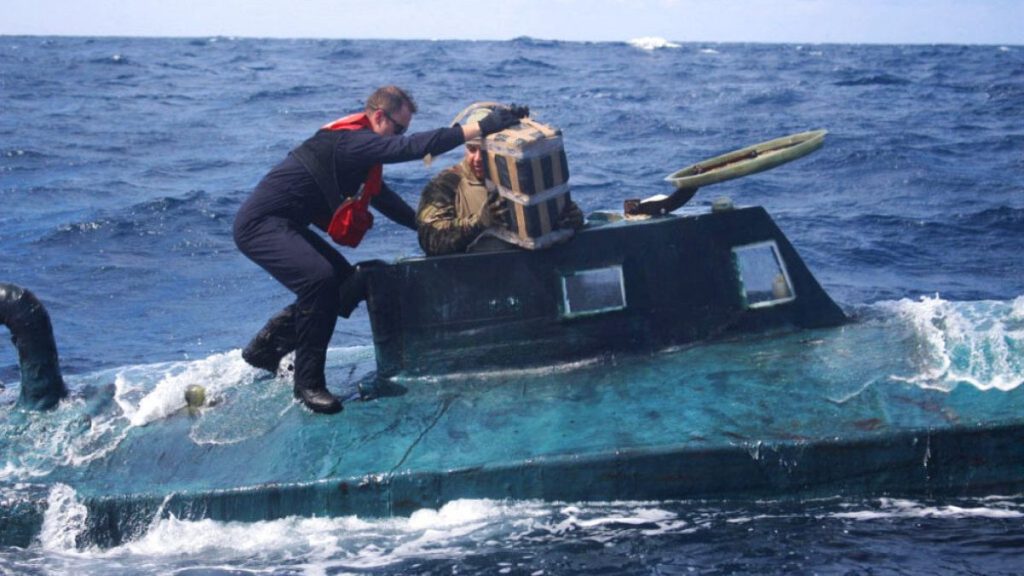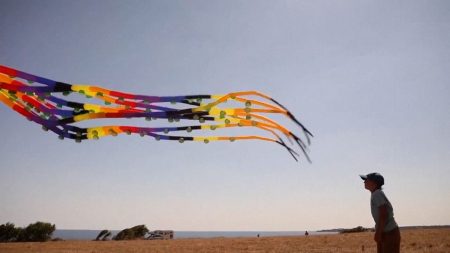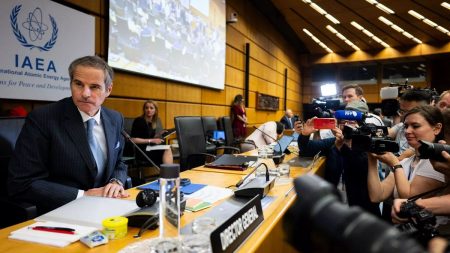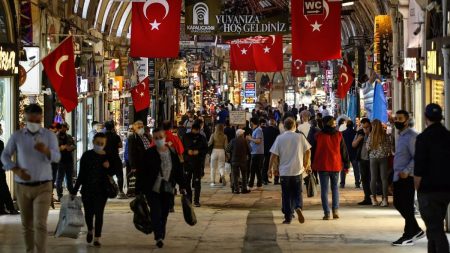The recent interception of a semi-submersible vessel loaded with cocaine in the Pacific reveals a new drug trafficking route linking South America to Australia. This discovery was part of a larger coordinated effort known as “Operation Orion,” conducted by Colombian authorities in collaboration with multiple international security agencies over six weeks. This operation resulted in an unprecedented seizure of at least 225 tonnes of cocaine, marking it as one of the largest cocaine interceptions in Colombian history, according to President Gustavo Petro. The domestic navy stated that this success dealt a significant blow to drug trafficking organizations, costing them approximately $8.4 billion (€8 billion).
Colombian officials reported that the semi-submersible, often called a “narco submarine,” was intercepted about 2,000 kilometers southwest of Clipperton Island, an uninhabited coral atoll. The operation resulted in the interception of six of these narco submarines, indicating an alarming trend in drug transportation methods. These vessels, which range from 10 to 25 meters in length, are designed to travel submerged or just below the water’s surface, making them difficult to detect. The rise in the use of such vessels suggests that drug cartels are adapting to enhanced maritime security measures by utilizing these less visible transit methods.
Experts estimate that the street value of a kilogram of cocaine can reach as high as $240,000 (€227,000) in Australia, significantly more than the price in the United States, reflecting the increasing demand for cocaine in Australia, where per capita consumption is reportedly the highest in the world. The International Organization for Economic Cooperation and Development (OECD) has noted that Australia surpasses the United Kingdom in terms of cocaine use among its citizens. This sharp price differential serves as a significant incentive for narcotics traffickers to develop new routes, such as the one recently uncovered by the Colombian Navy.
Colombia’s rising use of narco submarines can be interpreted as a direct reaction to intensified anti-drug enforcement efforts. Last year alone, Colombian authorities seized 10 narco submarines, which underscores the ongoing challenges faced in combating narcotics production and distribution. Despite these interventions, the criminal landscape in Colombia has evolved following the historic 2016 peace agreement between the government and the Revolutionary Armed Forces of Colombia (FARC). The power vacuum left by FARC’s demobilization has been filled by various rebel factions and drug trafficking gangs, leading to intensified competition for territory in regions once controlled by FARC.
The United Nations Office on Drugs and Crime (UNODC) reported significant increases in coca cultivation and cocaine production in Colombia. The area dedicated to coca cultivation climbed by 10% over the past year, reaching the largest extent seen in more than twenty years. This expansion is alarming, as it mirrors the country’s ongoing struggles with illicit drug production. UNODC estimates indicate that potential cocaine production surged by 53% from 2022 to 2023, creating a stark reality for law enforcement and government agencies working to mitigate drug-related issues.
In conclusion, the findings from Operation Orion reveal critical insights into the evolving dynamics of drug trafficking between Colombia and Australia. The sophisticated methods employed by drug traffickers, illustrated by the use of semi-submersible vessels, point to a growing challenge for law enforcement agencies worldwide. The alarming rise in coca cultivation and cocaine production within Colombia underscores the persistent nature of the drug trade amid shifting political and criminal landscapes. As drug cartels continue to innovate and adapt, international cooperation and strategic enforcement efforts become crucial in combatting the pervasive influence of narcotics.














